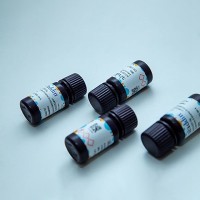Biochemical Methods to Determine Cell-Surface Topography: Part A. Labeling of Oxidized Glycoproteins with 3H-Borohydride
互联网
互联网
相关产品推荐

Cxcl16,Srpsox/Cxcl16,Srpsox蛋白Recombinant Mouse C-X-C motif chemokine 16 protein (Cxcl16) (Active)重组蛋白Scavenger receptor for phosphatidylserine and oxidized low density lipoprotein, Small-inducible cytokine B16, Transmembrane chemokine CXCL16蛋白
¥852

Hemagglutinin/HA重组蛋白|Recombinant H1N1 (A/California/04/2009) HA-specific B cell probe (His Tag)
¥2570

PE Antibody Labeling Kits(PE抗体标记试剂盒),阿拉丁
¥1699.90

HB Western blotting Principles and Methods
¥223

p46/p46蛋白Recombinant Mesomycoplasma hyopneumoniae 46 kDa surface antigen (p46)重组蛋白p46蛋白
¥2616
相关问答

